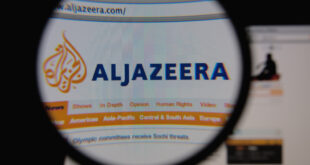According to the U.S. State Department, global terrorism clustered in three regions in 2018, with South Asia, the Middle East, and Sub-Saharan Africa accounting for nearly 85 percent of global attacks.
The Islamic State is seeking to plot a resurgence, attempting to revive its logistics apparatus with the help of militants using Turkey as a sanctuary.
Iran has remained one of the leading state sponsors of terrorism, as it is funding, training, and equipping a range of Shia militant groups in the Middle East.
The State Department has recognized a surge in ‘ethnically and racially motivated’ terrorism, with the majority of plots and attacks carried out by violent white supremacists.
Earlier this month, the United States Department of State released its Annual Country Reports on Terrorism, which analyzes transnational trends in terrorism and counterterrorism. The report correctly highlights three primary issues, including the continued threat posed by the so-called Islamic State, which is entering a new phase after the collapse of its territorial caliphate; Iran’s role as one of the world’s leading state sponsors of terrorism; and the dramatic rise in ‘racially or ethnically motivated terrorism’ around the world. Acts of global terrorism were primarily clustered in three regions in 2018, with South Asia, the Middle East, and Sub-Saharan Africa accounting for nearly 85 percent of all attacks globally. With the United States shifting its focus from counterterrorism operations to preparing for great power competition, already volatile regions of the world may grow even more unstable.
Even without the territory that it once held, which at its peak covered an area approximately the size of Great Britain, the Islamic State will continue to pose a major threat to regional and global stability. Its longtime leader Abu Bakr al-Baghdadi was killed in late October, although the group has since replaced him with Abu Ibrahim al-Hashemi al-Qurayshi, a relatively unknown entity whose anonymity inspires little confidence that he will be able to successfully lead the Islamic State to the comeback its propaganda has been trumpeting. Still, the Islamic State continues to maintain a global network of affiliates, with franchise groups located in Egypt’s Sinai Peninsula, Afghanistan, the Philippines and beyond. The Islamic State is also seeking to plot a resurgence in Iraq and Syria, planning prison breaks and attempting to revive the group’s logistics apparatus with the help of senior leaders using Turkey as a safe haven.
Iran has remained one of the leading state sponsors of terrorism, as it is funding, training, and equipping a range of Shia militant groups, including Lebanese Hezbollah, Iraqi Popular Mobilization Forces (PMF), and a growing network of Shia fighters from Afghanistan and Pakistan, which it deployed to prop up the regime of Bashar al-Assad in Syria. Through its Islamic Revolutionary Guards Corps (IRGC) and the elite Qods Forces, Iran also lends support to groups such as Hamas and Palestinian Islamic Jihad (PIJ). The Trump administration listed the IRGC as a foreign terrorist organization in an attempt to further hamper its efforts to serve as an extension of Iranian foreign and security policy through its mentorship of a range of violent non-state actors. As the United States continues its campaign of ‘maximum pressure’ designed to force the regime in Tehran to change its behavior, Iran’s leadership seems only to have intensified its support of terrorist groups and proxy forces as a tool of foreign policy.
In 2018, there was also a surge in so-called ethnically and racially motivated terrorism, with the lion’s share of plots and attacks carried out by individuals and groups inspired by violent white supremacy extremism. An attack by a violent white supremacist and anti-Semite on a synagogue in Pittsburgh in October 2018 was one of the deadliest acts of domestic terrorism on American soil. Groups based in the United States have forged relationships with violent white supremacists overseas, and Ukraine has served as a focal point for the movement more broadly. The United States has been slow to recognize the threat posed by violent white supremacy extremists, although the Department of Homeland Security recently released an updated counterterrorism strategy to more adequately reflect the threat posted by ‘ethnically and racially motivated terrorism’. To stay ahead of emerging challenges, the United States and its allies must be creative in thinking through future scenarios and ideologies that could motivate individuals and groups to perpetrate acts of political violence.
 Eurasia Press & News
Eurasia Press & News

